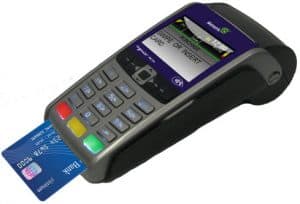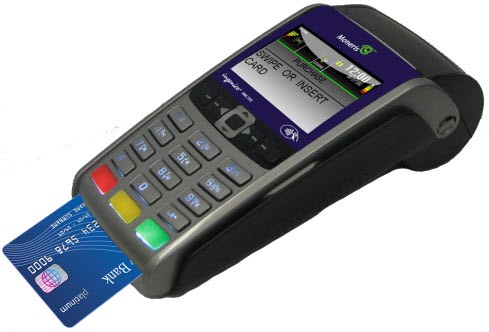PIN Pad
What is it?
A PIN pad is a device which allows a debit/credit card owner to place their card into the device and enter the card’s PIN. Once the PIN is entered, money can be drawn from the account or be used to pay for items being purchased.
How does it work?
The card is placed into the PIN Pad which then accesses the card’s chip reader. Once the card has been accepted, the user enters their four-digit PIN. If the PIN is correct then money can be drawn from the account or pay for items being purchased.
Advantages:
- The time taken to pay is shortened as the exact amount needed is given
- Helps reduce robbery at tills as less money is in the till
- PIN numbers help prevent fraud involving lost and stolen cards
Disadvantages:
- Risk of others seeing the card’s PIN
- Those travelling in countries which don’t use Chip and PIN may have a problem accessing their money
Chip Reader
What it is?
Credit and Debit cards now include ‘Chip and PIN’ which include electrical connections the card makes with the reader. A chip reader is the actual place where you put your credit/debit card in order to pay for something.
How does it work?
When the card is swiped at the till, it picks up information from a microchip embedded within the card that can check if the PIN number you enter is correct. You can tell if a card is ‘Chip and Pin’ by looking for a small rectangle of gold contacts on its surface (this is what the chip reader is).
Advantages:
- PIN Pads have a special hardware and software security features to make sure your PIN is erased if someone tries to tamper with the devices
- You need both the chip and the PIN to make successful transactions in store
Disadvantages:
- Cards are easily cloned, and people can be careless when using their PIN
